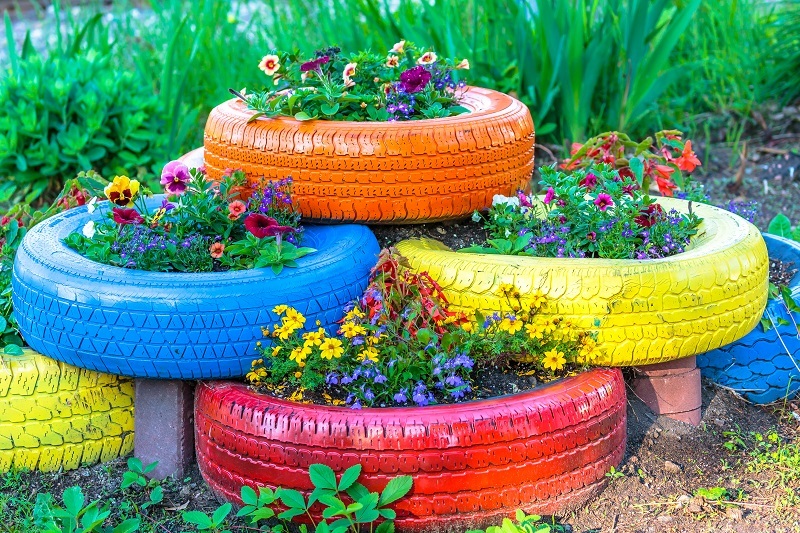Bloom Your Way to Better Emotional Health
Posted on 13/08/2025
Bloom Your Way to Better Emotional Health: A Comprehensive Guide
In today's fast-paced world, achieving better emotional health can feel like an uphill battle. Stress, anxiety, and daily challenges often overshadow our sense of well-being. But what if you could cultivate emotional strength, much like a gardener nurturing a vibrant bloom? In this in-depth guide, you'll learn how to bloom your way to better emotional health--embracing strategies, habits, and mindsets designed to help you flourish from within.
What Does It Mean to 'Bloom' Emotionally?
To bloom emotionally is to reach a state of flourishing--where your emotions, thoughts, and actions are in harmony, allowing you to experience contentment, resilience, and purpose. Much like a flower requiring sunlight, water, and care, our emotional well-being depends on the right blend of self-awareness, nurturing relationships, and purposeful living. By focusing on blooming for better emotional balance, you empower yourself to weather life's storms and savor its joys.

Why Is Emotional Health Important?
Emotional health is a key pillar of overall well-being. Research reveals that individuals who prioritize their emotional wellness enjoy:
- Stronger immune systems
- Lower rates of anxiety and depression
- Improved relationships
- Greater resilience during challenges
- Enhanced quality of life
Thus, learning how to bloom for better emotional health is a gift you give yourself and those around you.
Understanding the Foundations of Emotional Health
Emotional well-being is about more than just feeling happy. It's about being able to recognize, express, and manage your emotions--positive and negative--effectively. This sets the stage for reaching your full potential, forming healthy connections, and navigating adversity with grace.
Core Elements of Blooming Emotionally
- Self-Awareness: Understanding and recognizing your emotional patterns.
- Self-Regulation: Managing strong emotions and impulses constructively.
- Empathy: Connecting with others' emotions and responding compassionately.
- Resilience: Recovering from setbacks and adapting to change.
- Purpose: Feeling a sense of direction and meaning in life.
Cultivating Your Emotional Garden: Practical Steps to Bloom
Just as gardens need ongoing attention, improving your emotional health requires consistent, thoughtful habits. Explore these proven practices to nurture your own personal growth:
1. Practice Mindfulness & Presence
Mindfulness is the art of being fully present in the moment, aware of your thoughts and feelings without judgment. Studies show mindfulness helps reduce stress, heightens emotional intelligence, and enhances overall well-being.
- Set aside 5-10 minutes daily for mindful breathing or meditation.
- Observe your thoughts and emotions as they arise--without criticism or overthinking.
- Engage in activities (like walking or eating) with full attention to the present moment.
2. Nurture Positive Relationships
Personal connections are essential soil for your emotional garden. Healthy relationships provide support, belonging, and joy.
- Reach out regularly to friends and family, even if just with a quick message.
- Practice active listening--giving your full attention and responding thoughtfully.
- Set healthy boundaries to ensure relationships remain nourishing.
Remember, blooming for improved emotional health often starts with who you surround yourself with.
3. Express Emotions Constructively
Bottling up feelings leads to emotional stagnation--like a plant deprived of light. Instead, learn to express yourself openly and productively:
- Use "I feel" statements to communicate emotions instead of casting blame.
- Share feelings with trusted friends or therapists.
- Journaling can provide a safe outlet for otherwise unspoken thoughts and emotions.
4. Focus on Purpose & Goals
Living with purpose feeds your emotional well-being. Whether small daily intentions or larger life goals, having something meaningful to strive for boosts motivation and resilience.
- Reflect on what matters to you--relationships, causes, personal growth.
- Set specific, achievable goals and celebrate progress along the way.
- Volunteer or contribute to your community for a deeper sense of connection.
5. Prioritize Physical Health
The mind-body connection is powerful. Regular exercise, nourishing foods, and sufficient sleep lay the physical foundation for emotional flourishing.
- Aim for at least 30 minutes of activity most days.
- Choose a balanced diet rich in fruits, vegetables, lean protein, and whole grains.
- Establish a restful bedtime routine to promote quality sleep.
6. Embrace Self-Compassion
Just as blooms need gentle tending, so too do our emotions. Practicing self-compassion means treating yourself with kindness when you stumble, rather than harsh self-criticism.
- Replace negative self-talk with encouraging statements as you would for a friend.
- Allow room for mistakes; growth is a journey, not a straight line.
- Practice daily affirmations to reinforce positivity and self-worth.
Embracing self-compassion is a cornerstone of blooming for better emotional well-being.
Obstacles to Blooming: Recognizing and Overcoming Barriers
It's normal to experience setbacks or challenges on the path toward emotional wellness. Some common barriers include:
- Chronic stress from work, finances, or family obligations.
- Unprocessed trauma or unresolved grief.
- Negative thinking patterns or self-limiting beliefs.
- Lack of social support or isolation.
Recognizing these barriers is the first step. Seeking professional support, whether through counseling, support groups, or online resources, is a sign of strength--not weakness. Therapists can offer strategies to reframe thoughts, heal past pain, and build resilience for continued emotional growth.
Gardener's Wisdom: Top Expert Tips to Bloom Better Emotionally
- Start Small, Grow Tall: Incorporate one emotional wellness habit at a time--it's the daily, consistent efforts that lead to lasting transformation.
- Remember, Seasons Change: Emotional highs and lows are natural; be gentle on yourself during challenging times, knowing that growth is often cyclical.
- Celebrate Every Bloom: Acknowledge and savor small wins and moments of joy--they are signs of emotional blossoming.
- Seek New Sunlight: Explore interests, passions, or classes that excite you; trying new things can fuel happiness and self-discovery.
- Water with Gratitude: Regularly reflect on what you're thankful for as gratitude powerfully uplifts your emotional landscape.
Frequently Asked Questions About Blooming Your Emotional Health
-
How long does it take to see results?
Emotional growth is unique for everyone. Some feel changes in a few weeks, while deeper transformation might unfold over several months. Patience and persistence are key. -
Is it possible to bloom emotionally if I've struggled for years?
Absolutely! Emotional health can improve at any age or stage of life, especially with support and the right strategies. -
What should I do if I feel stuck?
If you feel unable to move forward on your own, consider speaking to a mental health professional--you are not alone, and help is available. -
Are group activities helpful?
Yes, connecting with others through group therapy or community events nurtures a sense of belonging and shared support, both essential for blooming emotionally.
The Science Behind Emotional Health & Blooming
Modern research supports the importance of nurturing emotional well-being:
- Neuroscience studies show that regular mindfulness and gratitude practices can physically reshape areas of the brain tied to emotion regulation and happiness.
- Cognitive Behavioral Therapy (CBT) helps many reframe negative thoughts, improving emotional resilience and outlook.
- Positive relationships are linked to longer life expectancy, less illness, and greater satisfaction.
Integrating these research-backed practices empowers you to blossom emotionally--laying the groundwork for fulfilling relationships, stable mood, and lasting happiness.

Personalizing Your Emotional 'Bloom' Plan
No two gardens are alike--your journey toward better emotional health should reflect your unique needs and preferences. Here's how to tailor your approach:
- Reflect honestly on which areas of your emotional health need the most nurturing (e.g., stress management, self-esteem, relationships).
- Choose 2-3 strategies that feel manageable and meaningful to you.
- Track your mood and progress regularly in a journal or app.
- Reassess monthly and tweak your plan as needed--growth often means trying new things.
- Celebrate progress and don't be discouraged by setbacks--they're part of the natural blooming cycle.
Resources for Continued Growth
- Books like "Emotional Agility" by Susan David and "The Gifts of Imperfection" by Brene Brown
- Apps such as Headspace, Calm, or Moodnotes
- Online support communities (such as forums or local groups)
- Mental health helplines for immediate assistance
Conclusion: Bloom into the Best Version of Yourself
Blooming your way to better emotional health isn't about achieving perfection--it's about progress, resilience, and the willingness to nurture your inner garden every day. By committing to self-care, strong relationships, purposeful living, and compassionate self-talk, you can blossom through adversity and discover a deeper sense of peace and happiness.
Every journey starts with a single seed--plant yours today, and watch as your emotional well-being blooms brighter with each passing season. Remember: it's never too late to cultivate the thriving, joyful, emotionally healthy life you deserve.
Ready to start blooming? Share your thoughts, questions, or personal stories below on how you are nurturing your own path toward better emotional wellness.
Latest Posts
Bloom Your Way to Better Emotional Health
Unlock the Key to Longer-lasting Poinsettias
Keep your floral arrangements vibrant with these tricks





